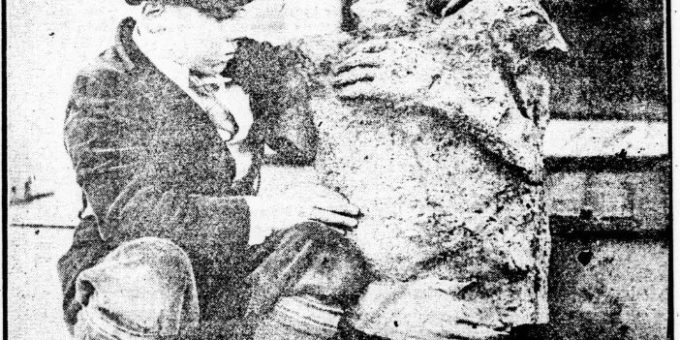
How many petrified bodies and body parts have been uncovered in the United States? Apparently far more than this article can cover. Since the 1800s, Americans have been fascinated with petrified body discoveries. They even sold these bodies to exhibits or they brought in a tidy sum by charging others to view the bodies. Museums offered large sums for petrified bodies, and if there was a story and a name attached to the body, the price would go up.
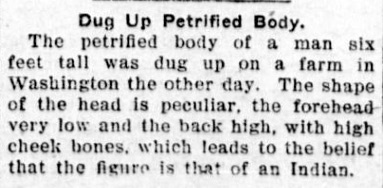
1. Notorious Outlaw on Display
Back in 1895, George Rennick and his wife were taking a walk along the Brazos River in Waco, Texas when they spotted a petrified foot sticking out of a sand bar. Since there were no laws about digging up petrified human remains, the couple began the tedious process of uncovering the body.
It was quite a find. The body had bullet wounds and rope marks on its neck, and because the couple thought it was a great find, they took the body home with them and put it on display the next day.
The Rennicks charged people ten to twenty-five cents to see the petrified corpse and on their first day they made a whopping $400.
Shortly afterwards, a name was put to the body. It was the notorious outlaw, Bill Johnson. The outlaw had been accused of killing over thirty men and when a mob finally caught up with him, he was shot “in the breast, bowels, and thighs.” Still alive, the outlaw was then strung up and hung until he died. This was back in 1857.
After Bill Johnson’s corpse was taken down, doctors cut him open and removed his bowels. They were curious as to how the outlaw had remained alive after getting numerous buckshot lodged in his bowels.
It is unknown what eventually became of the petrified outlaw. [1]
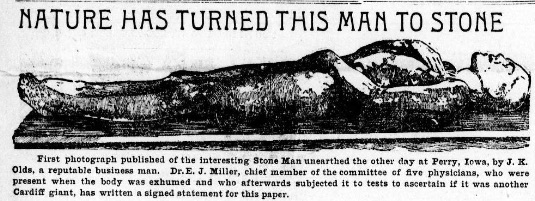
2. Yet Another Foot Sticking Out
At the end of the 19th century, a lot of petrified feet were apparently sticking out of the ground in the United States. In a situation similar to the previous petrified body find, again in 1895, two men discovered a petrified foot sticking out of the sand in Arizona.
According to their story, the Burnett brothers went to the river to get a load of sand. While searching for a spot to gather the sand, one brother thought they might as well take a dip in the river. While walking along the bank, he found a foot sticking up. It was brown and hard.
The brother started removing the sand and shortly afterward uncovered the leg of the body. The brothers were excited by this point. Finding a petrified body meant money, so the one brother went back into town and returned with a large wooden box and some sawdust.
The body was as perfect as a petrified body could be. While no one knew the identity of the body, it appeared to be about 5 feet 10 inches and a caucasian male.
Three men were needed to lift the hardened body and after they got it back into town, it went on display. [2]
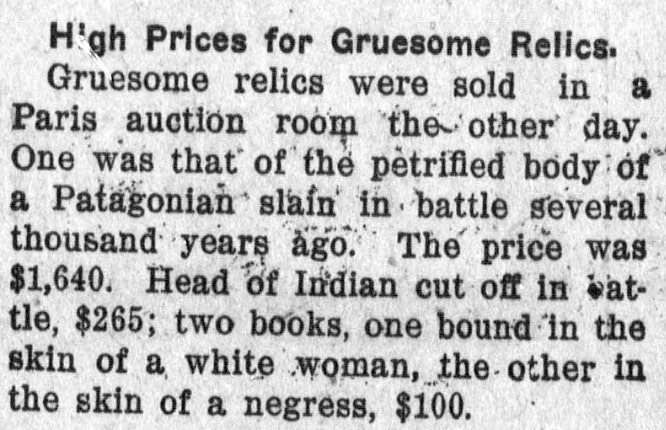
3. A Hand Stuck Out
In 1880, it was a hand sticking out of the sand at Cascade Lake, Nevada that caught a fisherman’s attention. Naturally, like everyone else during this time period, he began to dig and soon uncovered a fully petrified woman.
While the petrified woman was small in size, in her petrified state she weighed almost two hundred pounds. Regardless of her weight, the fisherman returned home with it and word got out about his find.
One man offered the fisherman $100 for the corpse. He wanted to present it to the Academy of Science, but the fisherman wanted more and, it is believed, he settled on a firm price of $150 for it. According to one report, the corpse was then sent to San Francisco to be presented and displayed. [3]
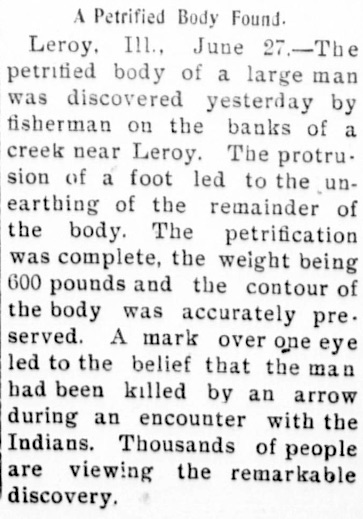
4. Petrified Giant
A twelve foot male giant was uncovered in Jackson, Michigan back in 1919. The body, petrified, was said to be “perfect in every way even to the hair on the head and the teeth which show no decay.”
Besides the giants large size, it was also reported that is had a “wooden peg” driven through its heart.
There are numerous reports of giants found, especially in the western states, but many of them were sent to The Smithsonian and never seen again. [4]
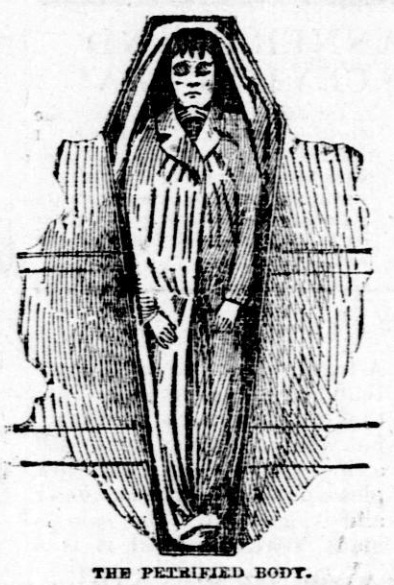
5. A Hand With Five Fingers and a Thumb
In 1913, it was reported that a group of Native Americans relinquished a petrified hand to the North Dakota Historical Museum located in Bismarck. What was extremely unique about this item was that it was a baby’s hand and it had five fingers and a thumb.
According to one article, the Native Americans had
“some traditions of a race of human beings once living in [these parts] before their ancestors came here, who had normally five fingers and a thumb. They say that the hands and fingers of these people were strong and were used for digging in the earth and for climbing trees when hard pressed by pursuing animals.” [5]
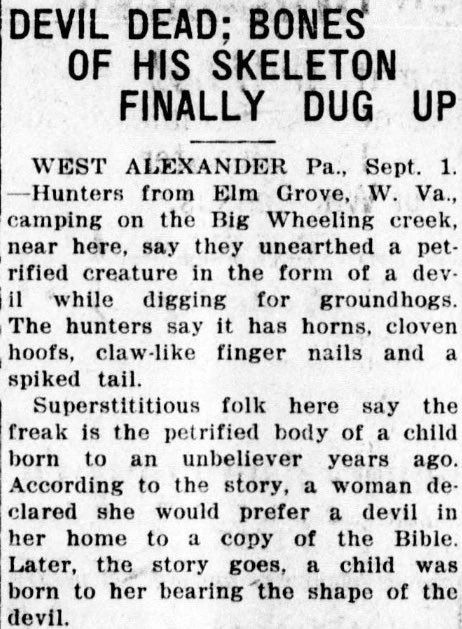
6. Found Deep Within a Coal Mine
There were once numerous reports of petrified bodies being discovered in coal mines. For example, it was reported in 1916 that coal miners out of Beckley, West Virginia had uncovered a perfect specimen of a petrified man.
According to one article:
“The petrified body was found several hundred feet below the surface and in a spot where, so far as is known, no white man had ever before penetrated. Former owners of the land could give no explanation of the body’s presence.”
After the body was removed from the mine, it was placed on display in the coal company’s office. [6]
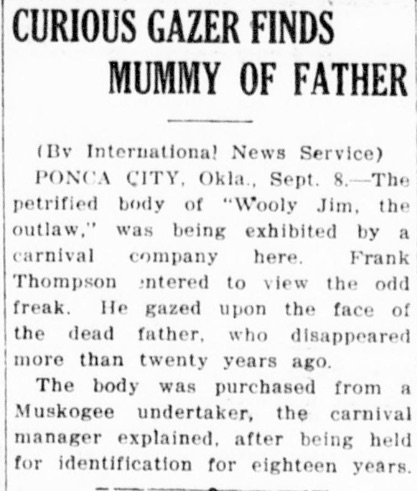
7. Wild Bill Hickok
It was sensational news. The pioneer cemetery in Deadwood, South Dakota was being dug up and moved to a new location in 1892. As bodies were being brought up from the ground, the laborers were discovering that many of the bodies were in a state of petrification. This included the remains of Wild Bill Hickok who was in a state of complete petrification and was said to have weighed roughly 300 pounds.
When word got out, museum managers from New York City began making outrageous offers for the body. They wanted to place Wild Bill on display, but, thankfully, Wild Bill was successfully transferred to his new resting spot. [7]
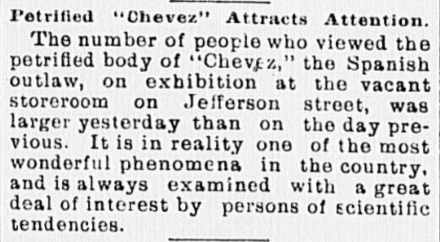
8. Human Hand Embedded in Rock
Young Ralph Bagby was working on a section of his family’s pasture in South Dakota, 1906, when he found a large boulder that appeared to have fossils in it. Naturally curious, the boy began chipping out the fossils until he came upon something rather peculiar.
A stone hand was embedded in the rock. Around its wrist and partially embedded in the rock was a metal bracelet.
The boy chipped away the rock containing the hand and took it back home. It went on display with people from across the U.S. visiting it to figure out if it was a petrified hand or if it was a natural formation.
What eventually became of the hand is unknown. [8]
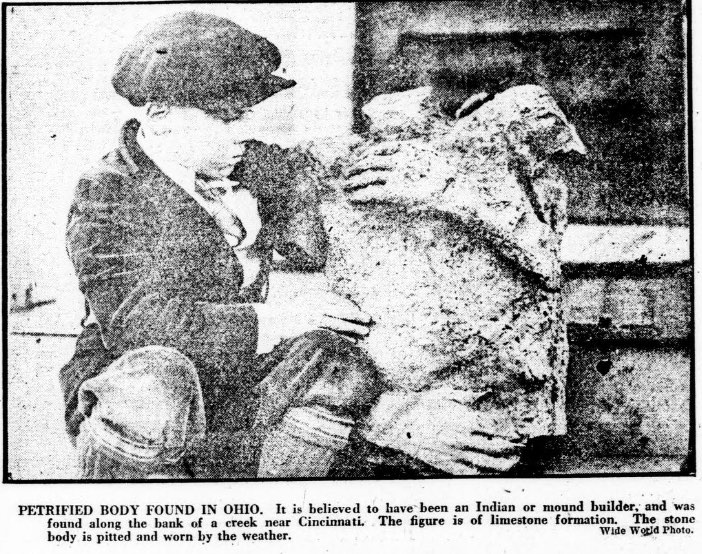
9. A Violent Death
Back in the early 1800s, Mr. and Mrs. Lovess lived together in a cabin in Walkerville, Illinois. All was well between them until a local land buyer became enamored with Mrs. Lovess. This other man began paying way too much attention to Mrs. Lovess and her husband became jealous.
Suddenly, although unexpectedly, the husband left the area. The Lovess cabin also burned down and, since Mrs. Lovess’s body was not found, the local people assumed that she also left the area.
Roughly sixty years later, in 1894, a woman’s body was discovered in a ravine near where the old cabin used to stand. The body had been completely petrified, and what happened to her was plain to all who viewed her remains.
“There was the trace of a ghastly wound on the forehead made by a sharp instrument, cleaving the skull, which must have [caused] death. It is supposed that the Lovess woman was murdered and buried in the ravine where found and the cabin burned to avoid detection or suspicion.”
Since so much time had passed between the murder and the discovery, the local people thought it would be a great idea to exhibit the woman’s remains for the “large crowds of curious people.” [9]
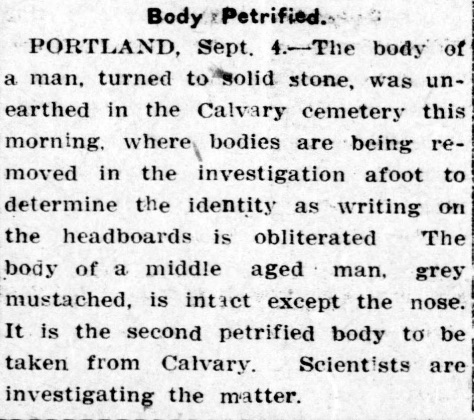
10. Dismembered and Petrified
Here is a bedtime story to tell the children. In 1893, the dismembered remains of a woman were found in Lake Michigan. According to the article, it was clear that the remains never had time to decompose. Instead, the body parts became petrified.
“The scientific theory is that the woman was murdered and cast into the lake with a heavy weight. Being thus held on the lake bottom, the intense cold of its waters preserved the flesh until hardened to stone by time.” [10]


